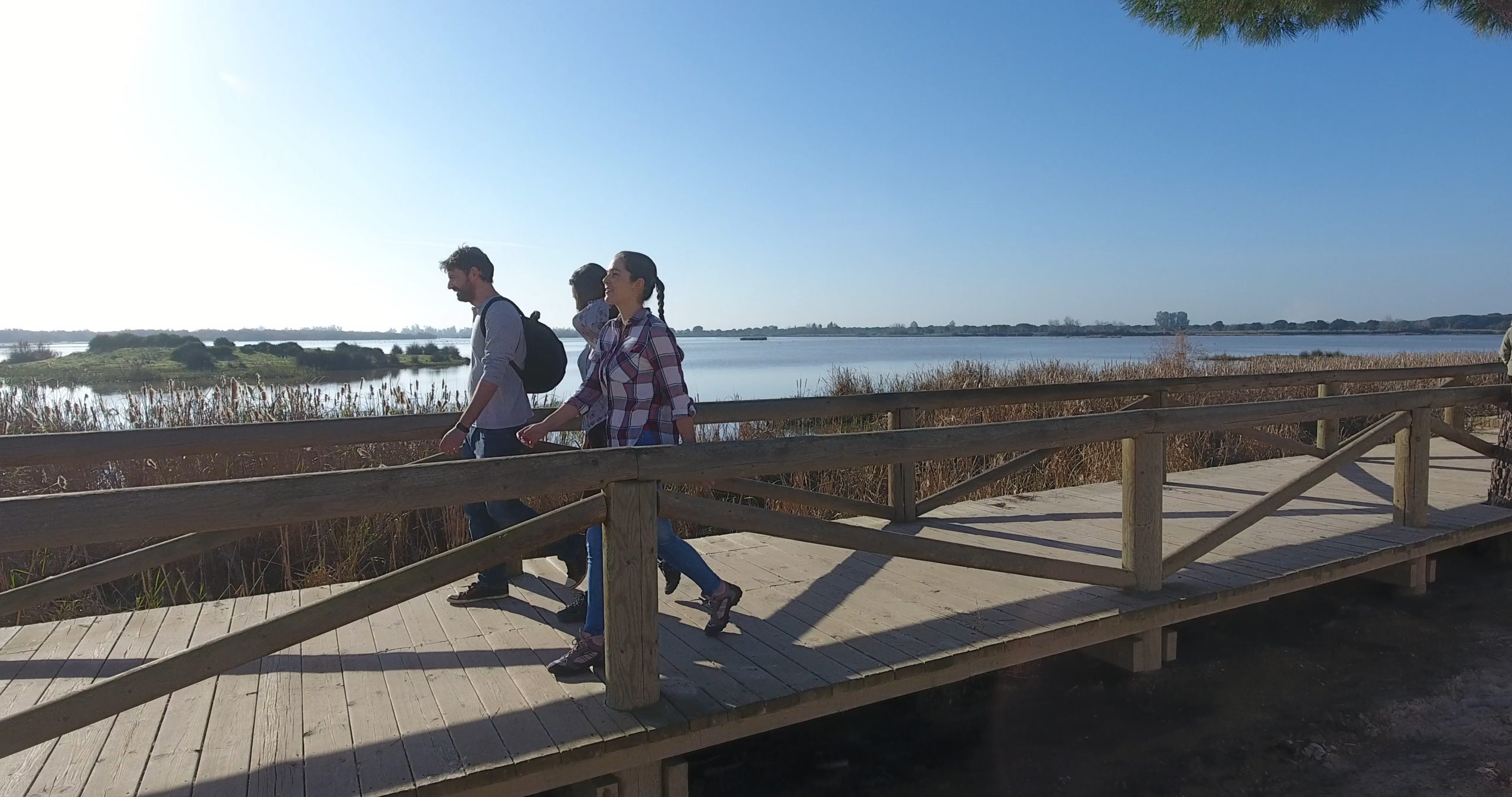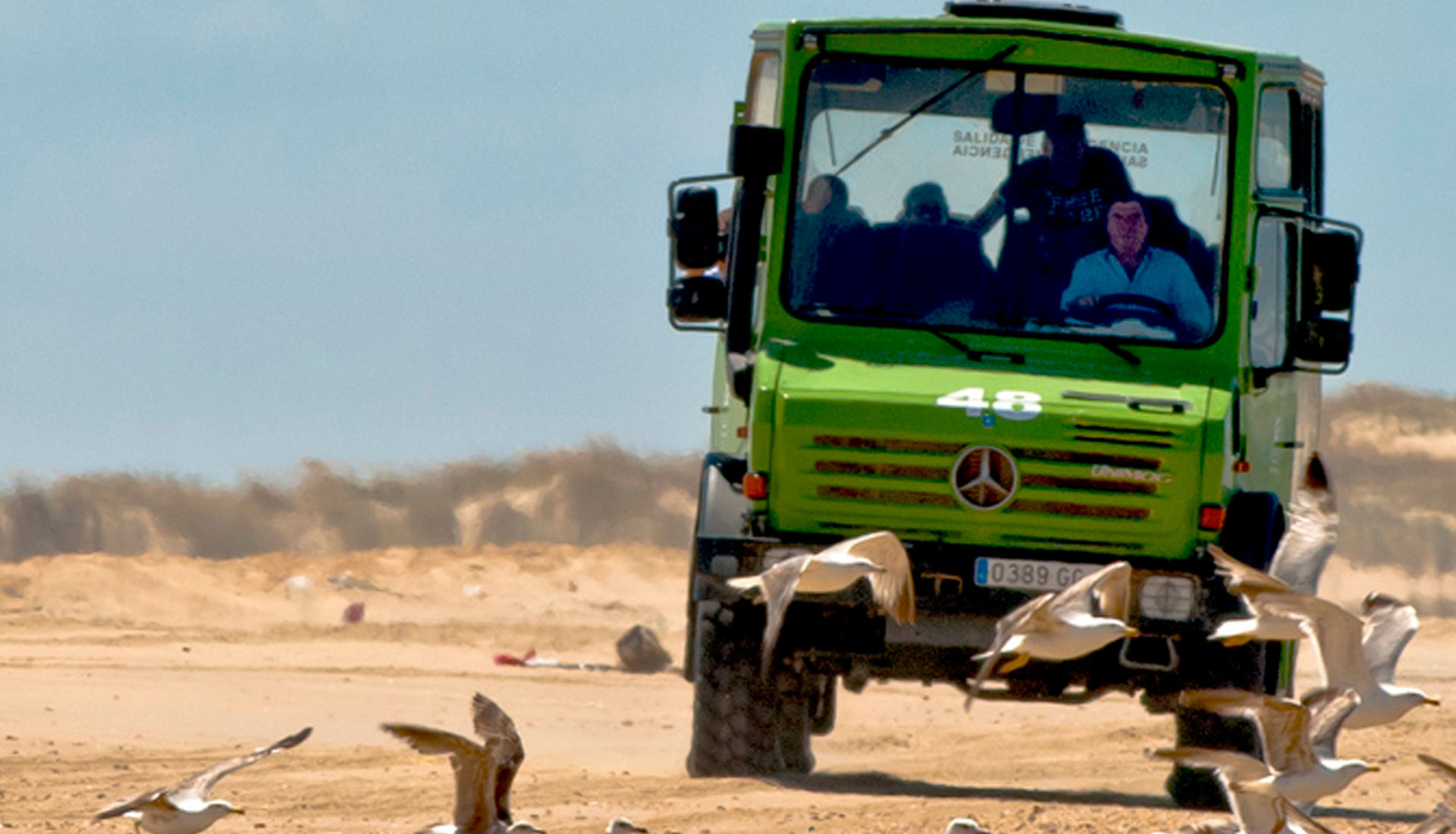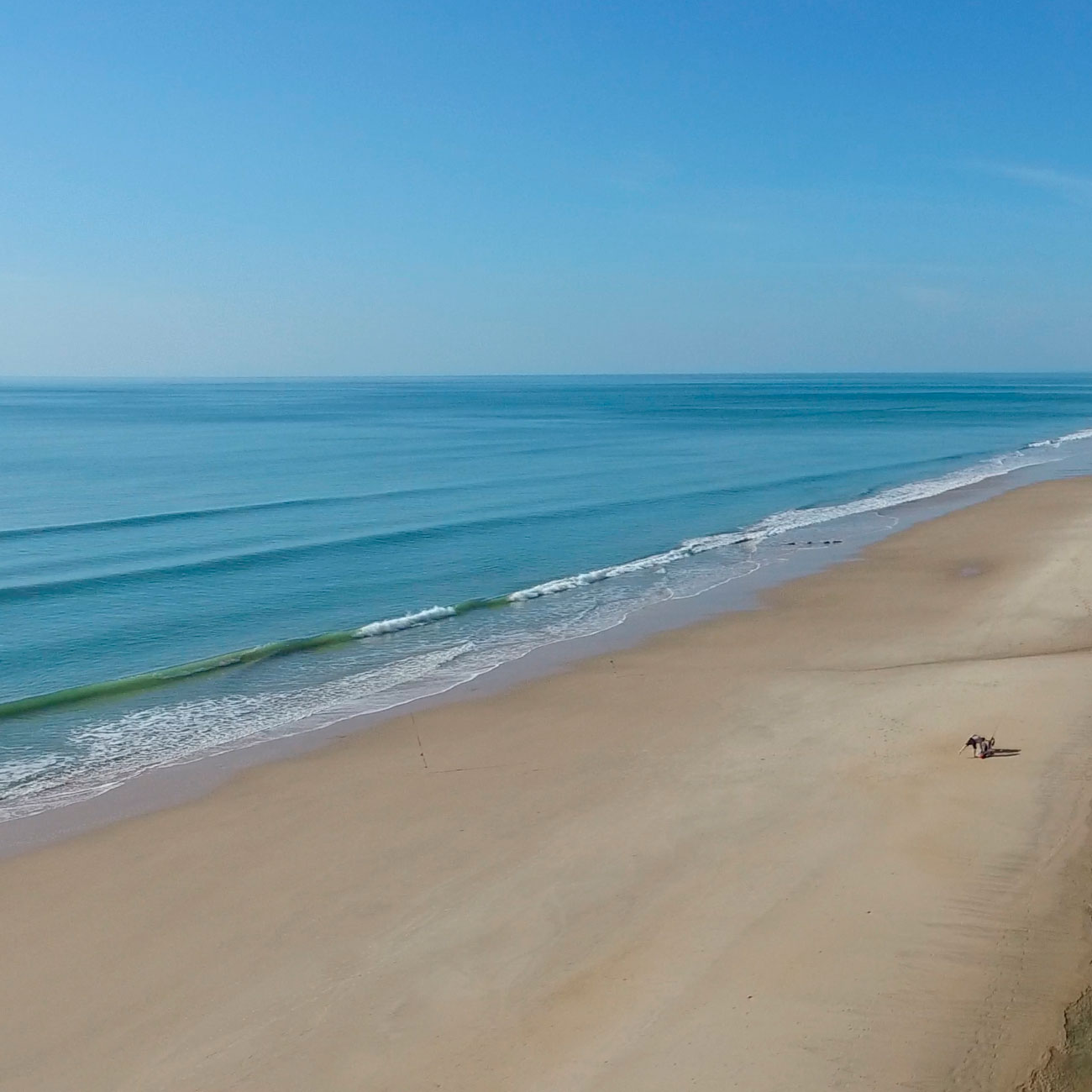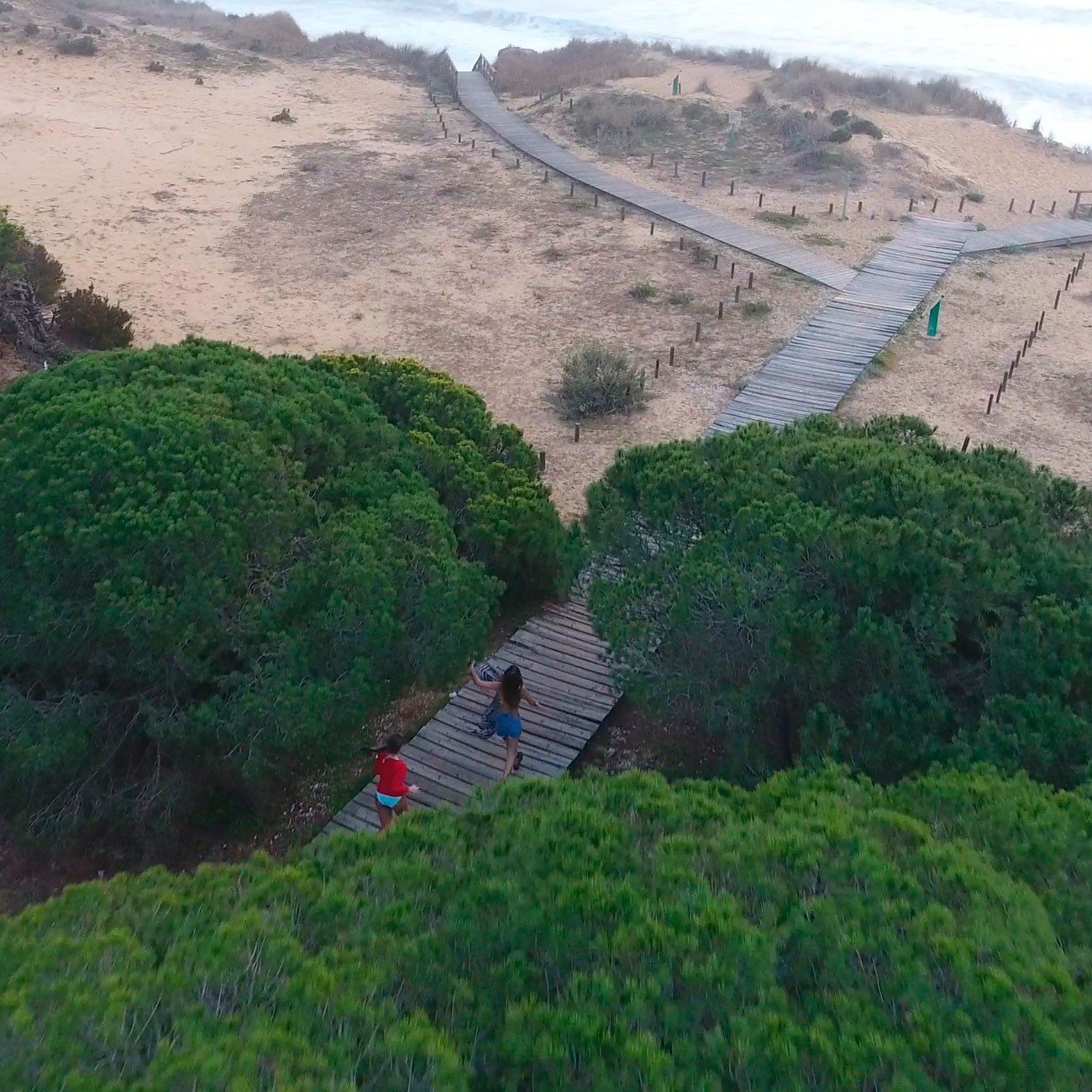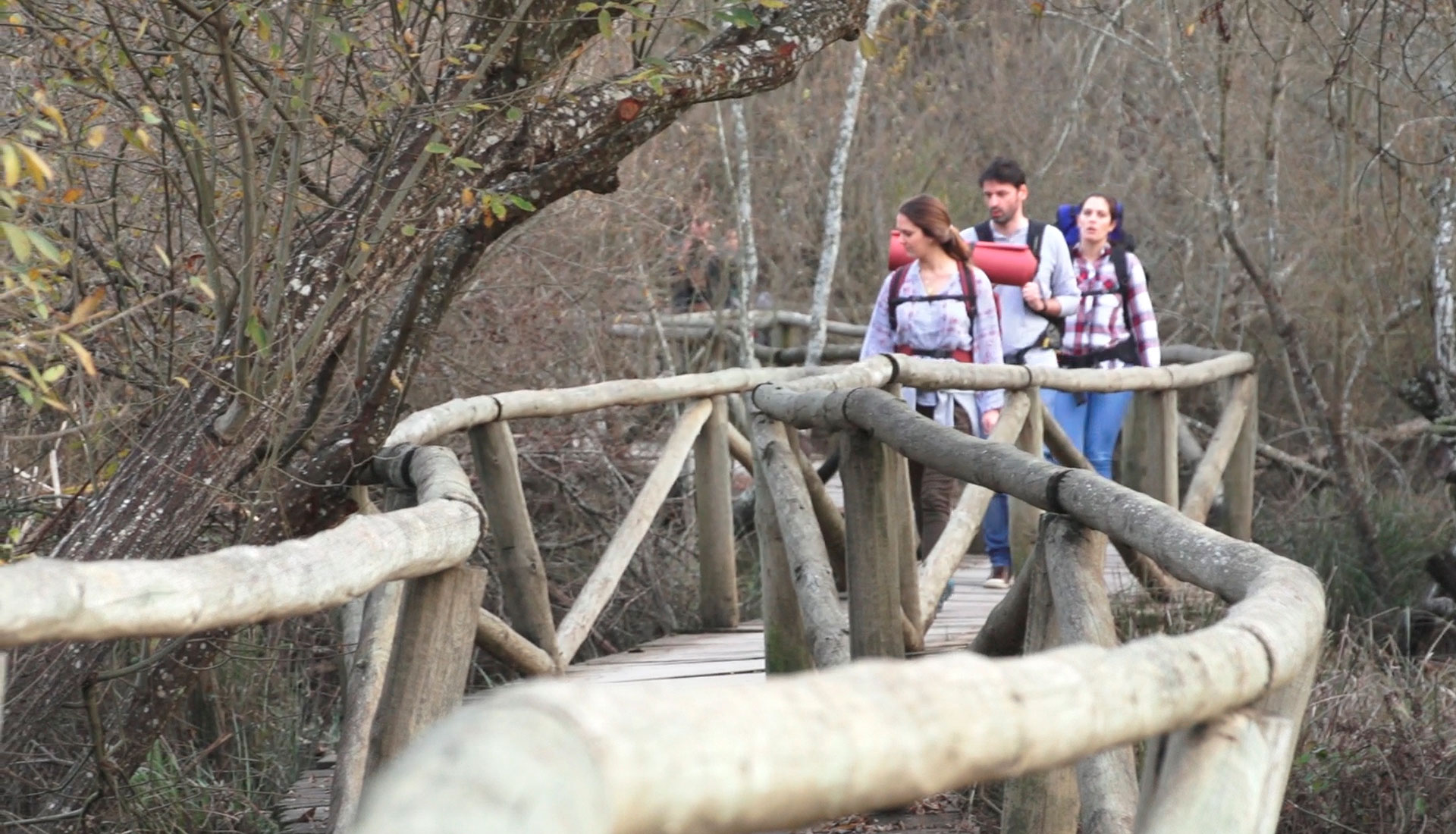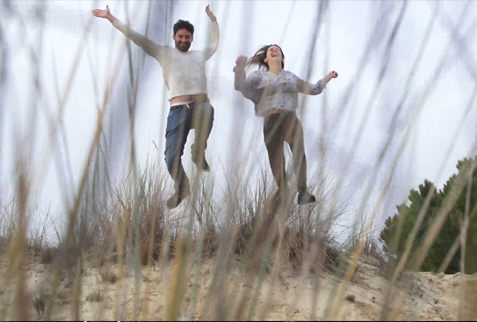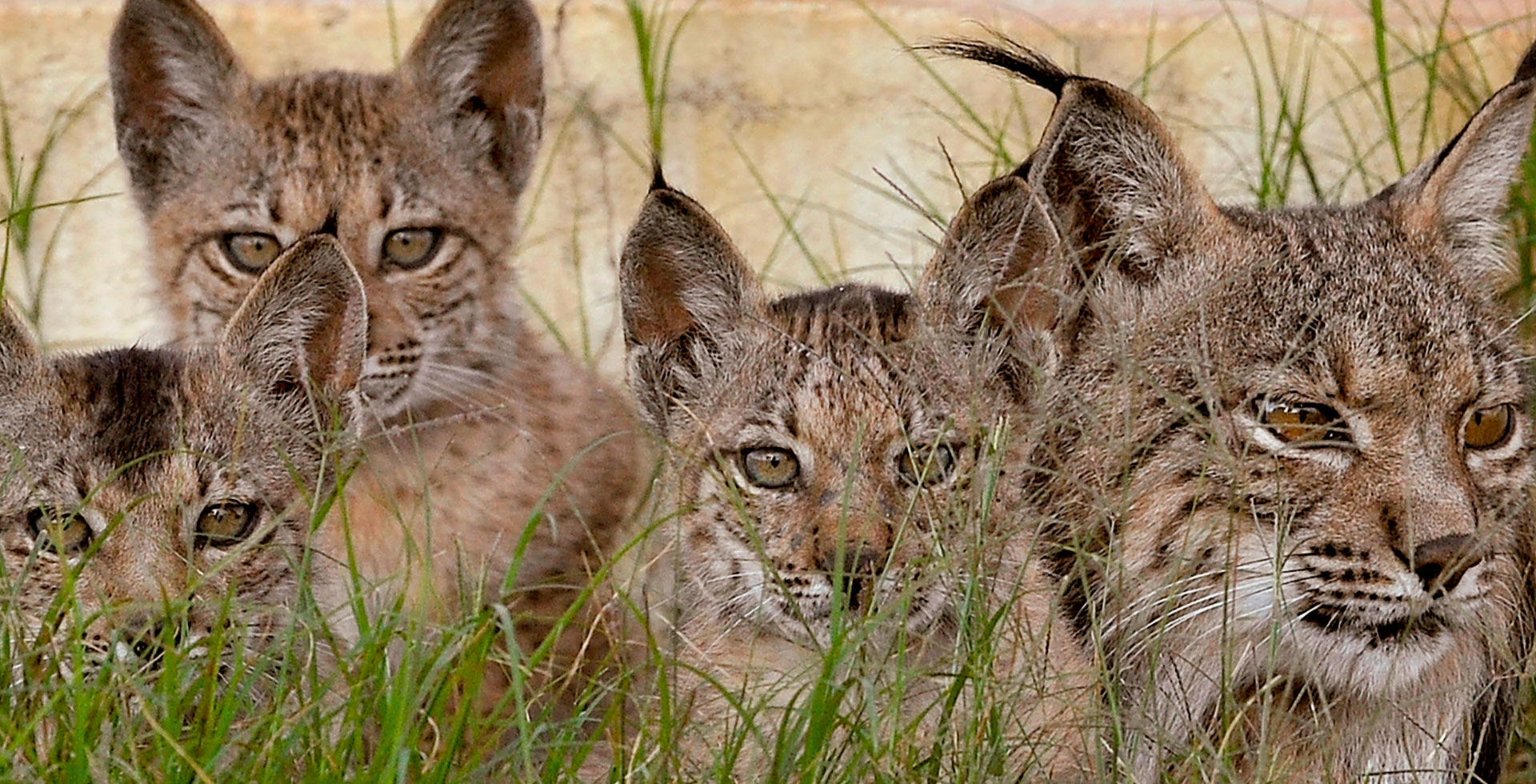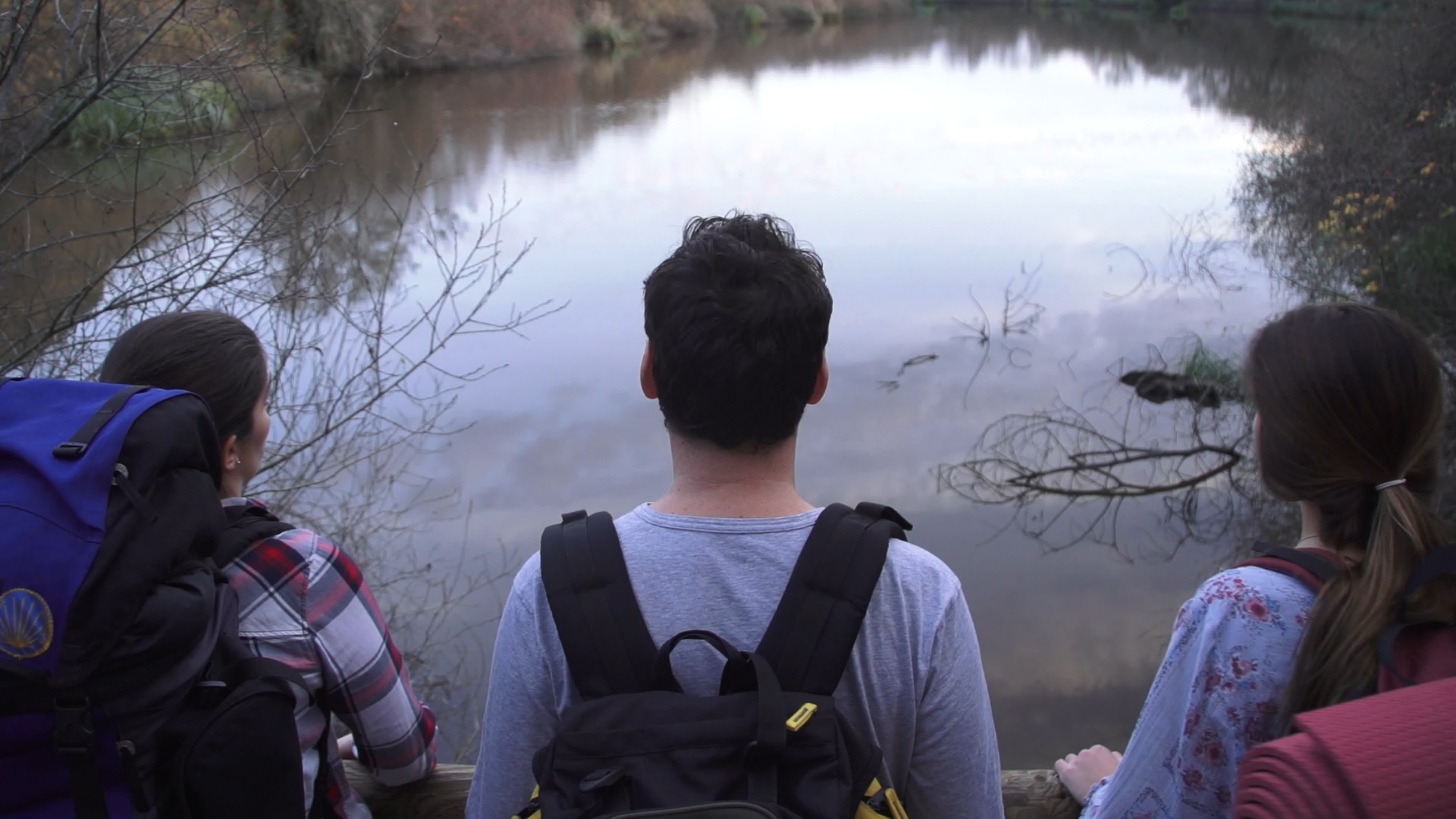A park with a unique personality
Doñana National Park represents the confluence of a set of ecosystems that are home to a unique biodiversity in Europe and is also home to unique and endangered species, such as the Iberian Lynx and the Spanish Imperial Eagle. Amongst the beach, dunes, reserves and marshes, in Doñana the marsh stands out above all, with extraordinary importance as a place of passage, breeding and wintering for thousands of European and African birds.
It is precisely this great variety of landscapes and species that makes Doñana a unique park: in addition to the marsh and its changing appearance, the beach, the mobile dunes and the ‘corrales’ (groups of Pine trees between dunes) converge here; the reserves and lagoons scattered among the vegetation and a transition zone that links and separates everything, the vera. The marsh is the absolute protagonist of the Park measuring an impressive 27,000 hectare. It is a wetland area of extraordinary importance and is filled with water thanks to the contribution of some streams and rainwater, which makes it very noticeable and contrasting each season.
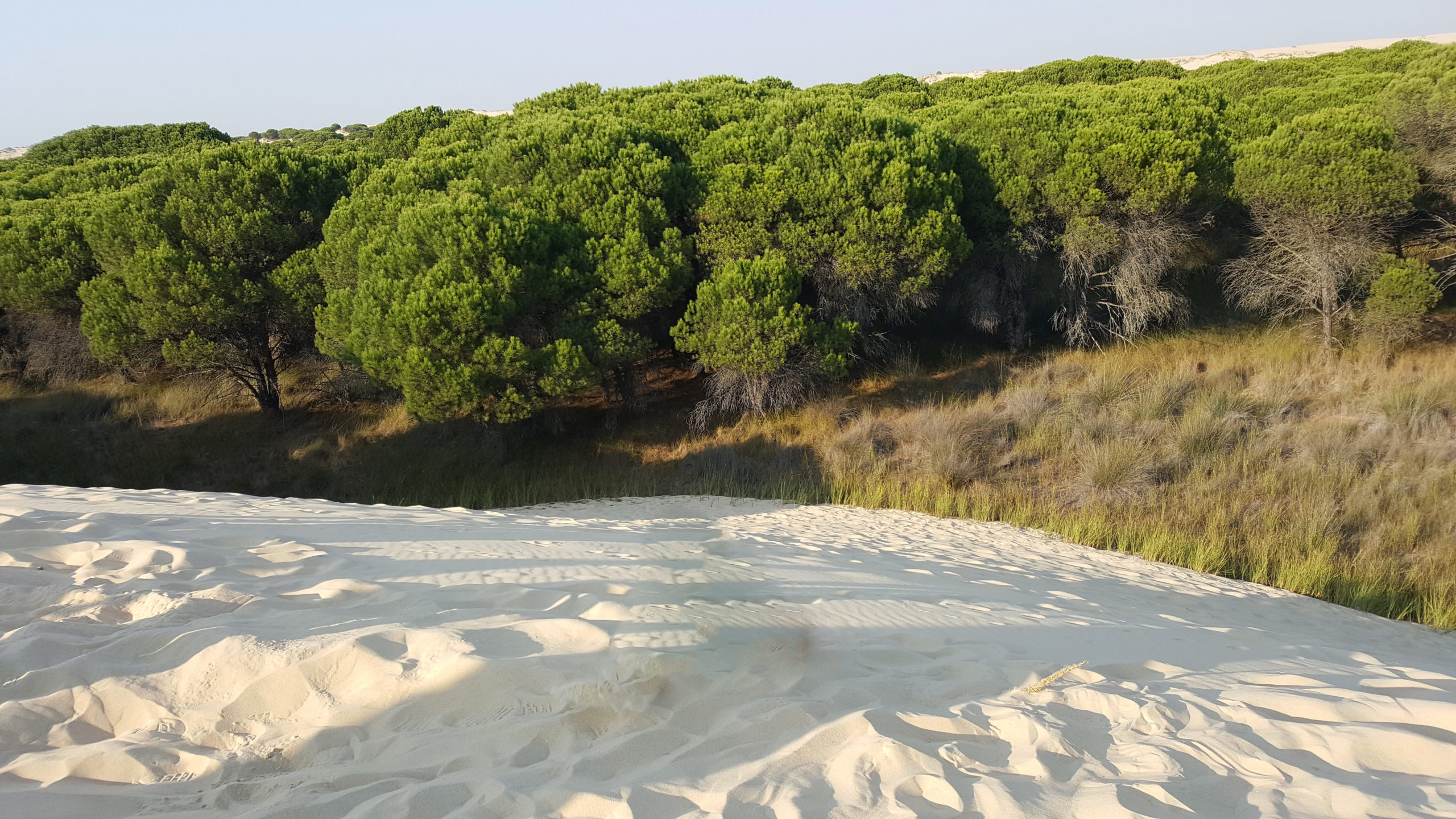
A Very Diverse and Unique Flora
The geographical situation of the Park and the botany of the region determine the presence of a very characteristic vegetation. Thus, although Mediterranean flora predominates in Doñana, we can also find Atlantic plants such as the ciliosus heather and the camarina; Ibero-African such as tumera grass; exclusive to the southwest of the Iberian Peninsula such as escobón; Euro-Siberian species such as the frog bite, or relict representatives of tertiary forests such as the royal fern, abundant in ancient times and today reduced to small areas. The most recent catalogs collect more than 1,300 species of vascular plants and ferns in the Doñana region.
The diversity of environments in Doñana makes it an area with very peculiar species that only exist in this part of the world. The coastal dunes and sandbanks are the habitat of the Linaria tursica, a tiny flower that rises just 15 centimeters from the ground between the dunes, or the Doñana carnation. . We also find in very small enclaves of Doñana, the Rorippa valdes-bermejoi, which lives only on the banks of the Arroyo de La Rocina, or a thistle that only lives in some sandbanks of the Doñana forests, the Onopordum hinojense.
The substrate plays a very important role in the distribution of the vegetation in Doñana, making a clear separation between the sandy soils in the north and the clay soils in the south, partly conditioned by the distance from groundwater, the proximity to the sea and the salinity. Temporary wetlands also generate habitats that welcome very particular aquatic species.
Doñana, an exceptional space for fauna
Doñana is a great home that gives shelter to more than 400 species of birds, 50 species of mammals, 25 reptiles, 11 amphibians and more than 70 species of fish. Its numbers are exceptional in Europe, but the phenomenon that has given Doñana world fame is the migration of its birds.
Species in danger of extinction and of great value coexist here, such as the Iberian Lynx, the Spanish Imperial Eagle, the Retuerta horse, the Marismeño horse and the Marismeña cow. These last three species are native to Doñana, with an ancestral origin that historically links them to the park and are registered in the Official Catalog of Cattle Breeds of Spain.
The Doñana National Park was introduced to the world as a hunting ground and refuge for birds, but thanks to its location, it is a meeting point for many migratory birds that establish their wintering place here, breeding or resting on their way to Africa. Some species come from nearby places and others come from very distant regions, and Doñana is not always the final destination point for these birds.
In addition to the wide range of different bird species that occur in this territory, it is worth highlighting the great concentration of many of them. In a single winter, some 200,000 individuals can be concentrated in Doñana, the most notorious being the aquatic varieties as a result of their abundance and eye-catching aesthetics.
Source: National Parks Network / Ministry for the Ecological Transition and the Demographic Challenge
